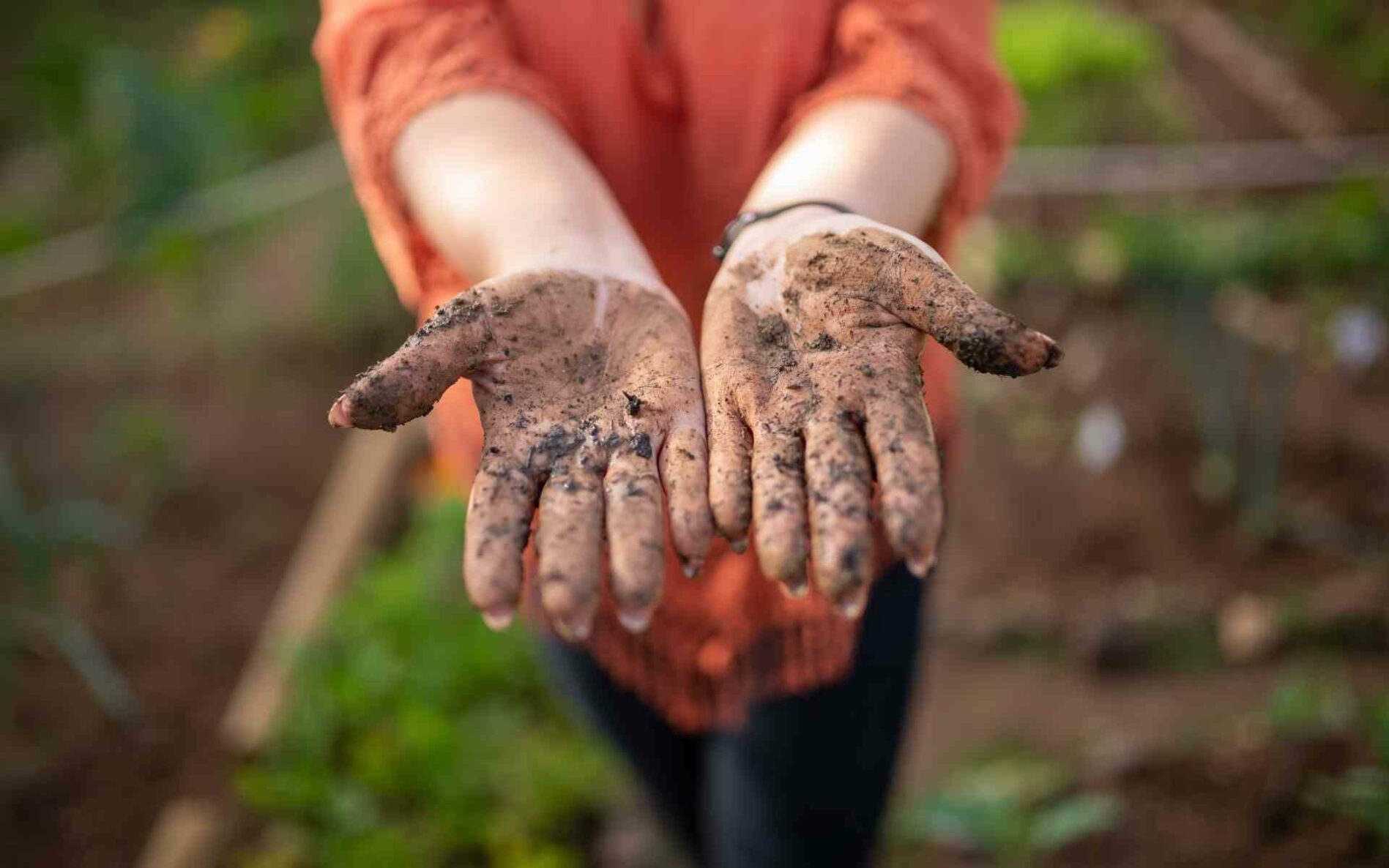One of our recent blogs gave you an idea of why organic soil is better for your plants than dousing your garden with chemicals. Here are the key components of healthy soil, explained:
Sand, Silt, and Clay
These materials comprise the texture of soil. While the three are comprised of rocks and minerals, they vary in composition and size. Sand is the largest grain, followed by silt, and then clay.
Organic Matter
Organic matter consists of decomposed branches, leaves, bark, roots, plants, insects, and animals. Over time, these are converted into humus, a carbon-rich coffee-colored material that looks like the product you get at end of a composting cycle.
Air and Water
Air and water fill the voids between individual mineral and organic particles.
Bacteria
Bacteria are one of our planet’s most important decomposers of organic matter. They’re also the most numerous organism in soil because they are just so small. 250,000- 500,000+ of them could fit inside this dot: •
Fungi
Fungi, like bacteria, are in the business of decomposition. However, these powerful organisms go after the complex foods that bacteria can’t consume, have the ability to penetrate hard surfaces, and grow with the blinding speed of 40 micrometers a minute (to put that into perspective, grass grows at about ¼ of the speed)!
Algae
Algae- single-celled, thread-like photosynthetic organisms- are often thought of as primitive plants (even though they’re close relatives of bacteria) because they take energy from the sun and produce their own food. While we usually relate algae and bodies of water, they thrive in moist soil. In the right conditions, they can create polysaccharides, mucilage, and slimes which help bind soil particles.
Protozoa
Protozoa get their nutrients by ingesting bacteria, fungus, and other protozoa. These organisms keep the population of bacteria and other protozoa in soil under control (yes, there are cannibal protozoa!), mineralize nutrients obtained by eating other organisms which can then be made available to plants, break up organic matter, and enter symbiotic relationships with other organisms in the soil web.
Nematodes
Like protozoa, nematodes mineralize nutrients contained in bacteria and fungi. Different nematodes have different diets: some eat living plant material (these are not conducive to healthy plants), some eat bacteria, and others eat protozoa, algae, and other small members of the food soil web.
Arthropods
Arthropods are invertebrate animals that include flies, beetles, spiders, and centipedes. Their role in the food web is to chew up organic matter and create smaller pieces which then increases fungal and bacterial activity. They also act as a metro system for microbial life and mix and aerate the soil as they move below the surface.
Earthworms
Earthworms are vital for healthy soil; they shred organic matter, aerate soil, aggregate soil particles, move organic matter and microorganisms throughout the soil, increase microbial populations, and aid plant root growth.
Gastropods
Gastropods include organisms like slugs and snails. These little critters are eating machines that speed decomposition and decay, open up organic matter for smaller organisms to eat, create underground pathways for air, water, and roots, and provide a food source for organisms higher up the food web.
Reptiles, Mammals, and Birds
The role of the biggest organisms on the block is simple: their dung is food for smaller organisms and when they die, their carcasses are decayed and absorbed by soil life.
The soil food web is highly complex, teeming with life, and- we would argue- a much better environment for your plants than the chemical-ridden alternative. Now, it’s time to get to work to create a healthy garden for your home! Our soil web investigation led us to Teaming with Microbes: A Gardener’s Guide to the Soil Food Web by Jeff Lowenfels & Wayne Lewis, which is where we recommend you go next on your journey to healthy soil!

